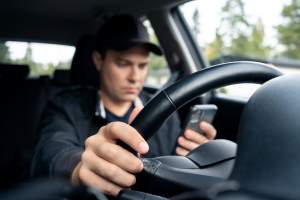Red light safety cameras are one of the most visible, and controversial, traffic-safety interventions in U.S. cities. Proponents argue they deter risky driving, reduce the most dangerous T-bone collisions, and save lives. Critics call them revenue tools, say they shift crash types (increasing rear-end collisions), and point to mixed study results. In this blog, we…
Continue reading ›Articles Posted in car accident
When the season’s first big snow arrives it feels magical, at least until someone slides through an intersection or a commuter’s commute becomes an emergency room trip. Research shows the very first snowfall of the season is disproportionately dangerous: while snowy days in general sometimes have fewer total fatal crashes (because fewer people drive), first-snow…
Continue reading ›Every year, Thanksgiving brings plates piled high, crowded airports, and, for millions, long drives to see family. That increase in travel, coupled with late-night driving, alcohol use at celebrations, bad weather in some regions, and congested roads, makes Thanksgiving one of the deadliest holidays on U.S. roads. Holiday weekends concentrate risk into a few days:…
Continue reading ›Getting into a crash is stressful under the best of circumstances, but when it happens while you’re traveling in a rental car, confusion about who pays, who to call, and what paperwork you need can make a bad day much worse. In this blog, we walk you through what typically happens after a rental car…
Continue reading ›Passengers injured in car accidents have legal rights that are distinct from the driver’s. Because passengers didn’t control the vehicle or the driving choices, their claims often focus on the driver(s), vehicle owners, employers, and sometimes third parties like manufacturers or municipalities. In this blog, we discuss the most common types of passenger claims, who…
Continue reading ›Autumn in Illinois is beautiful. Cooler air, colorful leaves, pumpkin spice everywhere, but fall also brings a shifting mix of weather and roadway hazards that meaningfully change risk of a serious car accident. For drivers in Illinois and across the U.S., the combination of less daylight, wet leaves, fall fog, more deer on the move,…
Continue reading ›Blunt force trauma refers to injuries caused by a non-penetrating force, a collision, a blow, or compression, that transfers energy to the body without an object piercing the skin. In the context of car accidents, blunt force trauma is the most common mechanism of injury: occupants are thrown against dashboards, airbags, steering wheels, door panels,…
Continue reading ›Smartphones and social media keep us connected, but that connection comes at a deadly cost when people use their phones behind the wheel. What used to be a quick glance at a notification can become a life-changing car accident in a matter of seconds. In this blog, we explain how social media use while driving…
Continue reading ›When you’re involved in a car accident, an available video recording from a city traffic camera, a red-light/speed camera, a police dashcam or body-worn camera, or a business’s security camera can be the single most important piece of evidence. The bad news: most systems overwrite recordings automatically and retention windows are often short. The good…
Continue reading ›Halloween is one of the most fun nights of the year, costumes, candy, and neighborhood togetherness. But it’s also one of the most dangerous nights for pedestrians, especially children. The combination of increased foot traffic, low light, costumes that reduce visibility, and impaired or distracted drivers creates a higher-than-normal risk of serious injury or death.…
Continue reading ›

